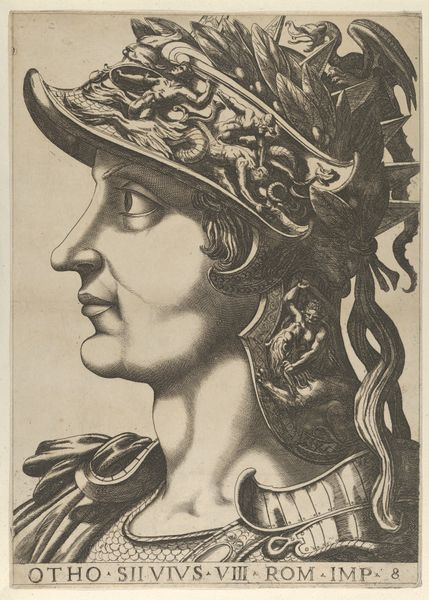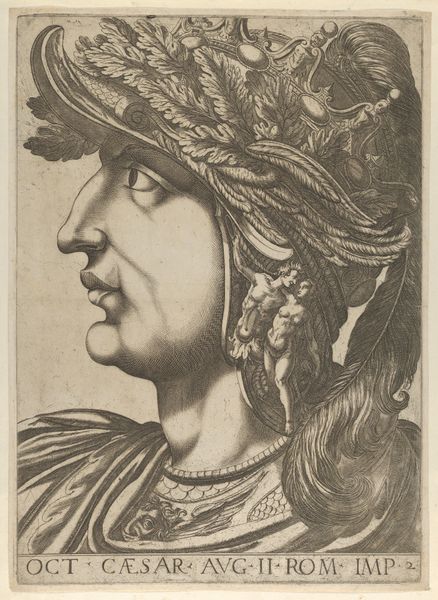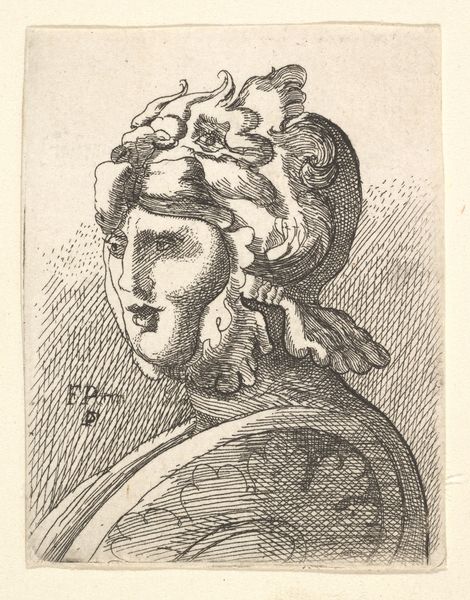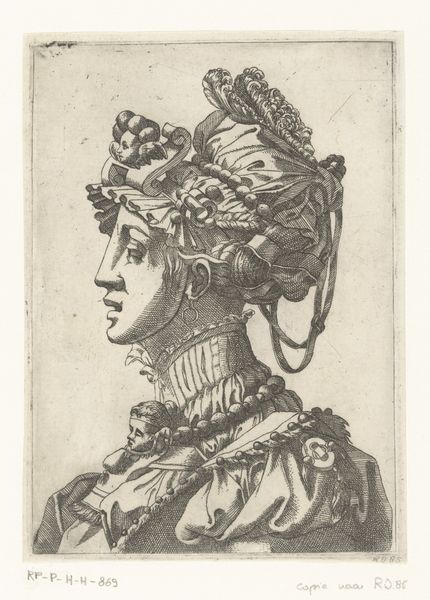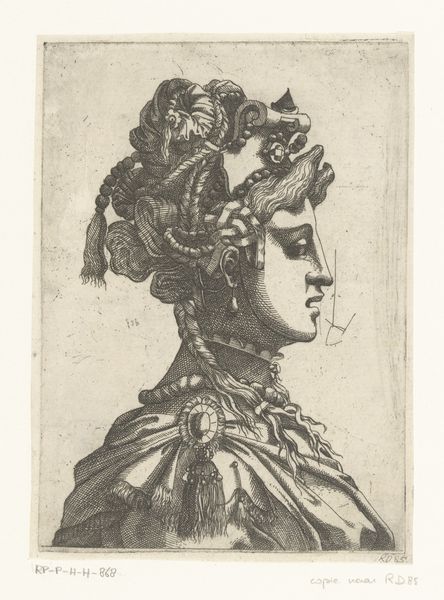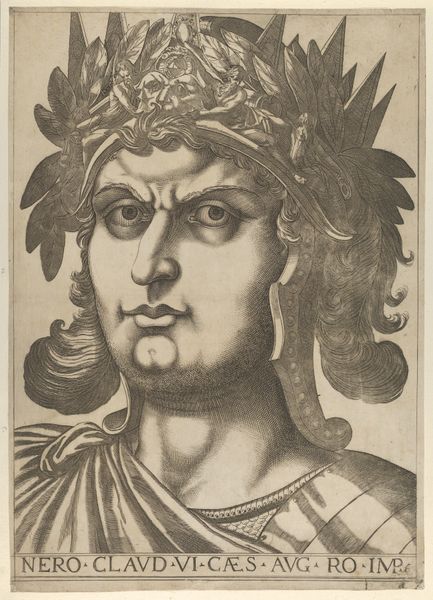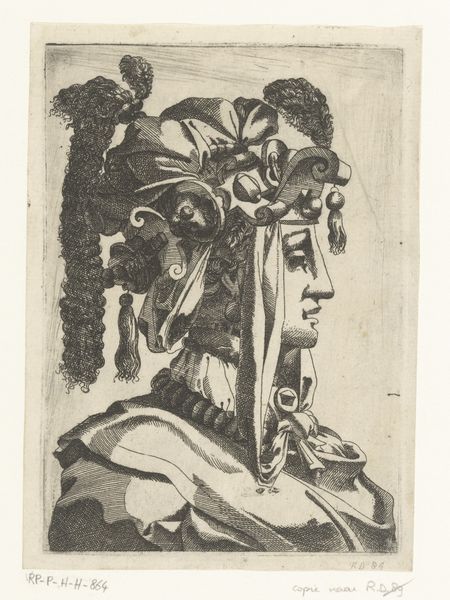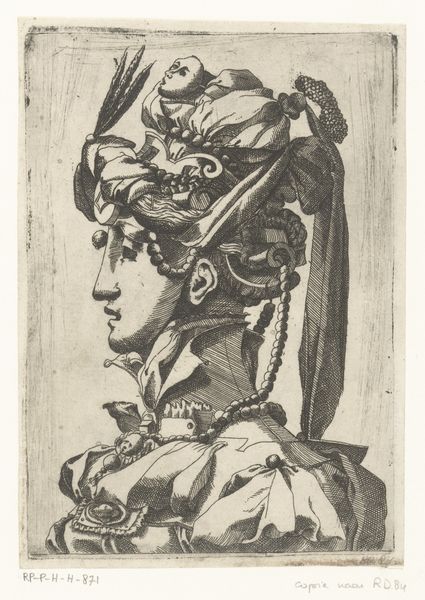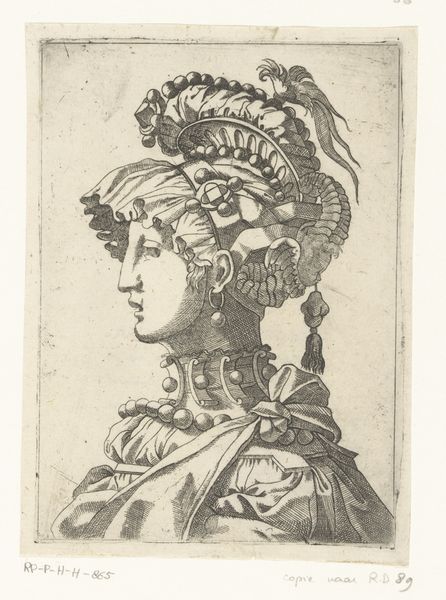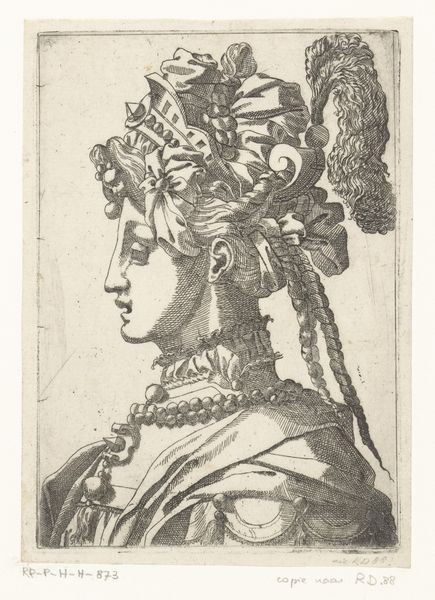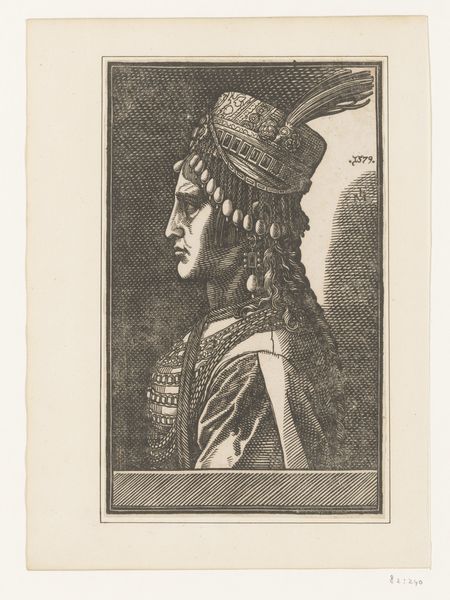
Plate 12: Domitian in profile to the right, from "The Twelve Caesars" 1610 - 1640
0:00
0:00
drawing, print, engraving
#
portrait
#
drawing
# print
#
figuration
#
ancient-mediterranean
#
line
#
portrait drawing
#
history-painting
#
engraving
Dimensions: Sheet (Trimmed): 20 5/16 × 14 1/2 in. (51.6 × 36.8 cm)
Copyright: Public Domain
Curator: This engraving, "Plate 12: Domitian in profile to the right, from \"The Twelve Caesars," thought to be produced between 1610 and 1640, captures the emperor with astonishing detail. What's your immediate reaction? Editor: My first impression is the line work; it's incredibly dense and creates a texture almost like fabric. And, honestly, I find myself wondering about the engraver. This must have taken so long! Curator: Absolutely! The lines define not just form but also power, don't you think? Note the eagle on his helmet, a clear reference to Roman imperial authority, linking him directly to Jupiter. The laurel wreath symbolizes victory and triumph. What does the visual density of the print contribute, beyond technique? Editor: Well, the weight of it, the sheer amount of work involved speaks to a perceived importance, doesn't it? These weren't mass produced in our modern sense, yet these prints allowed wider access to classical imagery for a growing educated class. Did this affect how Roman authority was perceived at the time? Curator: Precisely. By circulating these images, it cemented visual associations between Roman emperors and the concepts of leadership. The artist uses an idealized portrait to link Domitian to the virtues expected of rulers. But, it's worth remembering the complex reality of his reign, and the different interpretations offered about Domitian in historical memory. Editor: So, it's fascinating to see how the symbolic weight you’re discussing rests upon a foundation of material labor: the choice of engraving, the paper itself, and the skill of the artist shaping these things for circulation. It is an interpretation mediated by materials and process. Curator: That’s very insightful. These lines carry not just visual information but echoes of cultural expectations. The print preserves the continuity of specific symbols related to power, visible across time and cultures. Editor: It makes me think about how we consume images today and how the means of production influence their cultural power and staying power. Thanks! Curator: Agreed! It offers an incredible look into both technique and how visual and cultural symbols become deeply embedded through material forms.
Comments
No comments
Be the first to comment and join the conversation on the ultimate creative platform.

